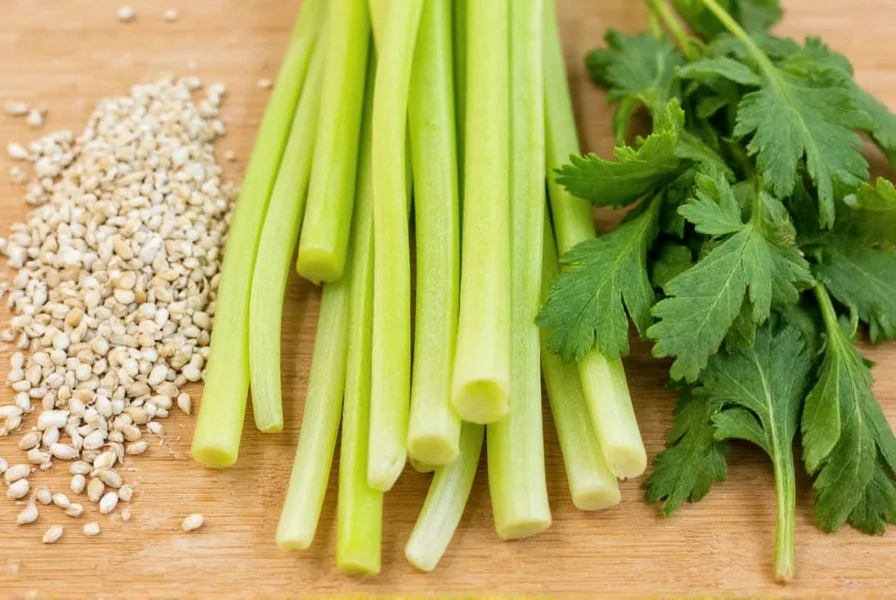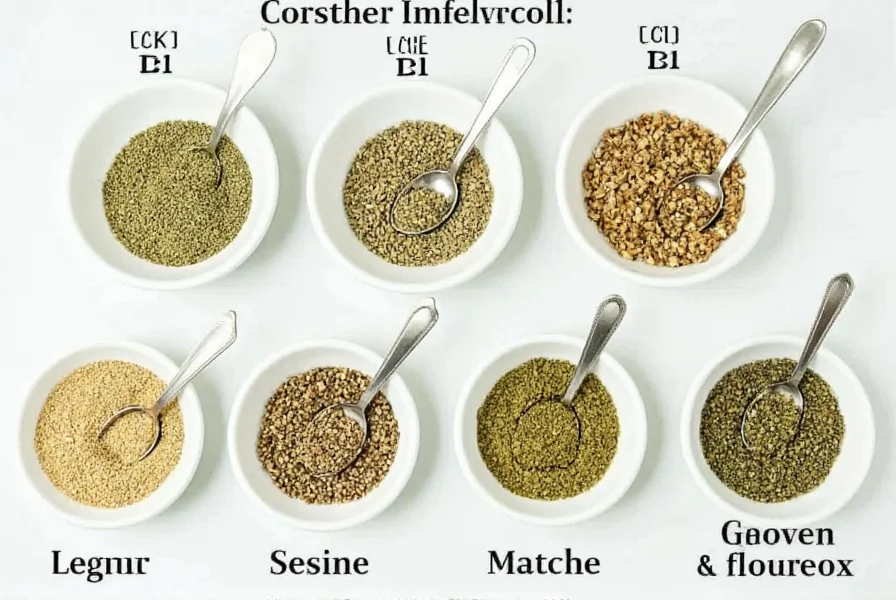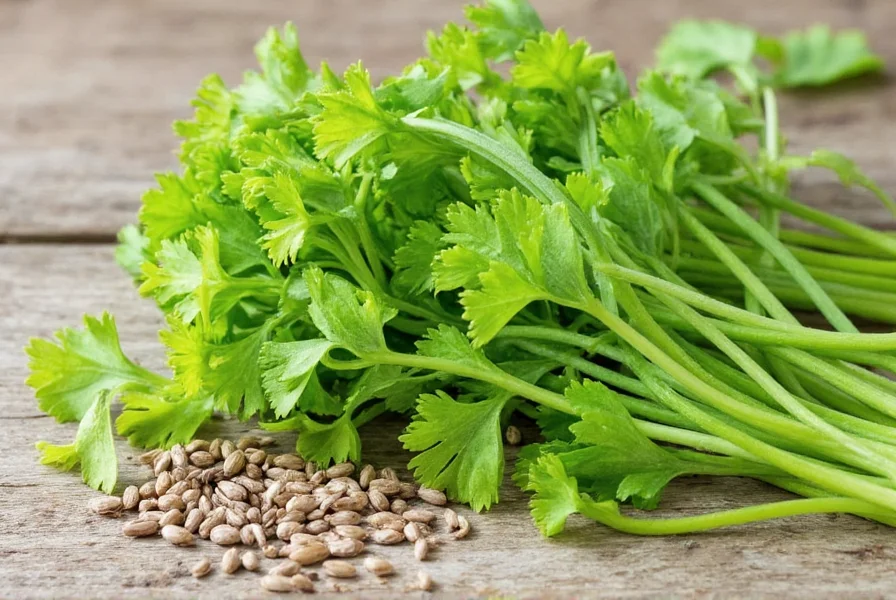If you're searching for celery seed alternatives, you're likely mid-recipe with an empty spice jar. Understanding the right celery seed replacement can save your dish while maintaining that distinctive savory, slightly bitter flavor profile essential in many recipes. Celery seeds provide a concentrated herbal note that's difficult to replicate perfectly, but several practical alternatives exist depending on your specific cooking needs.
Understanding Celery Seed's Culinary Role
Celery seeds come from the same plant as the celery stalks you find in grocery stores, but they're harvested when mature and dried. These tiny seeds pack a powerful flavor—more intense than fresh celery—with earthy, herbal notes and subtle bitterness. They're commonly used in:
- Salad dressings and coleslaw
- Soups and stews
- Pickling brines
- Seasoning blends like Old Bay
- Casseroles and vegetable dishes
When seeking a celery seed substitute for soup or other liquid-based dishes, consider how the alternative will integrate with other ingredients and whether it will withstand cooking time without becoming overpowering.
Top Celery Seed Substitutes Ranked by Effectiveness

1. Fresh Celery (Best All-Purpose Substitute)
Fresh celery provides the most authentic flavor profile when celery seeds aren't available. The leaves contain concentrated flavor similar to the seeds.
- Conversion: 1-2 stalks with leaves = 1/4 tsp celery seeds
- Best for: Soups, stews, and braises where texture isn't critical
- Tip: Finely chop both stalks and leaves; add early in cooking for maximum flavor extraction
When using fresh celery as a celery seed replacement in pickling, increase the amount by 50% since the flavor is less concentrated.
2. Celery Salt (Quick Pantry Solution)
Celery salt combines ground celery seeds with salt, making it a convenient substitute when you need both flavor and seasoning.
- Conversion: 1/4 tsp celery seeds = 1/2 tsp celery salt
- Best for: Seasoning meats, potato salad, and Bloody Marys
- Caution: Reduce additional salt in your recipe by 1/4 tsp for every 1/2 tsp celery salt used
This celery salt vs celery seed conversion works well when you need immediate flavor but must account for the added sodium content.
3. Lovage (Specialty Herb Alternative)
Lovage has a flavor profile remarkably similar to celery but more intense. This herb is becoming more available in specialty markets.
- Conversion: 1/4 tsp celery seeds = 1/8 tsp dried lovage or 1 tsp fresh lovage
- Best for: Stocks, soups, and potato dishes
- Tip: Use half the amount of lovage compared to celery seeds to avoid overpowering your dish
Lovage as celery seed substitute works particularly well in European recipes where both herbs have traditional culinary uses.
4. Dill Seeds (For Pickling Applications)
While not identical, dill seeds share some flavor compounds with celery seeds and work surprisingly well in pickling recipes.
- Conversion: 1/4 tsp celery seeds = 1/4 tsp dill seeds
- Best for: Pickles, relishes, and cucumber salads
- Limitation: Not suitable for non-pickling applications as the flavor profile differs significantly
When looking for a celery seed substitute for pickling specifically, dill seeds provide complementary flavors that work well with vinegar-based brines.
| Substitute | Conversion Ratio | Best Culinary Applications | Flavor Intensity |
|---|---|---|---|
| Fresh celery (with leaves) | 1-2 stalks = 1/4 tsp seeds | Soups, stews, braises | ★ ★ ☆ ☆ ☆ |
| Celery salt | 1/2 tsp = 1/4 tsp seeds | Seasoning blends, Bloody Marys | ★ ★ ★ ☆ ☆ |
| Lovage | 1/8 tsp dried = 1/4 tsp seeds | Stocks, European dishes | ★ ★ ★ ★ ☆ |
| Dill seeds | 1/4 tsp = 1/4 tsp seeds | Pickling recipes only | ★ ★ ☆ ☆ ☆ |
| Celery powder | 1/4 tsp = 1/4 tsp seeds | Dry rubs, seasoning mixes | ★ ★ ★ ☆ ☆ |
When Substitution Won't Work
Some recipes rely specifically on celery seeds' unique properties. Avoid substituting when:
- Making traditional Bloody Mary seasoning (celery seeds provide distinctive texture)
- Creating certain commercial spice blends where exact proportions matter
- Preparing dishes where the visual speckling of seeds is part of the presentation
Recipe-Specific Substitution Guide
Different dishes require different approaches when replacing celery seeds:
- For soups and stews: Use fresh celery stalks and leaves, added at the beginning of cooking
- For salad dressings: Celery salt works well but reduce other salt by half
- For pickling recipes: Dill seeds provide the closest flavor match
- For breads and baked goods: Lovage offers the most similar flavor profile without altering moisture

Making Your Own Celery Seed Alternatives
For frequent cooks, creating your own celery seed alternatives ensures freshness and control over ingredients:
- Homemade celery powder: Dehydrate celery stalks completely, then grind to powder
- Concentrated celery broth: Simmer celery stalks in minimal water, then reduce to a thick syrup
- Celery leaf pesto: Blend celery leaves with olive oil for a flavorful infusion
Store celery-based substitutes in airtight containers in the refrigerator for up to one week, or freeze in ice cube trays for longer storage. When using frozen substitutes in cooking, add them directly to hot dishes without thawing.
Final Considerations for Perfect Substitutions
The key to successful celery seed substitution lies in understanding your specific recipe requirements. For most home cooking applications, fresh celery provides the most versatile alternative. When time is limited, celery salt offers the quickest solution with proper salt adjustment. Specialty dishes like pickles benefit most from dill seeds, while European recipes often work best with lovage.
Remember that no substitute perfectly replicates celery seeds' unique flavor profile, but with these alternatives, you can maintain the essential character of your dish without compromising quality. Always taste as you go when substituting, as individual palates vary in their sensitivity to these herbal notes.











 浙公网安备
33010002000092号
浙公网安备
33010002000092号 浙B2-20120091-4
浙B2-20120091-4